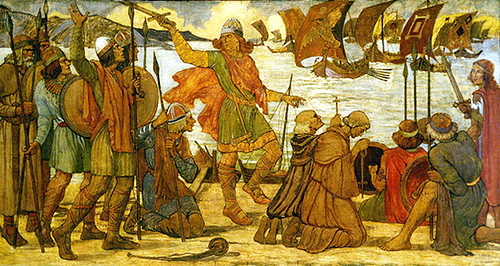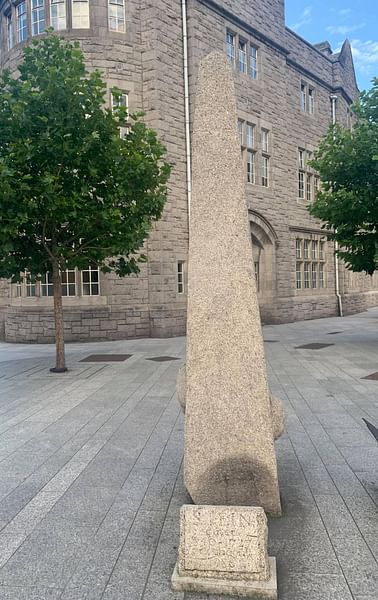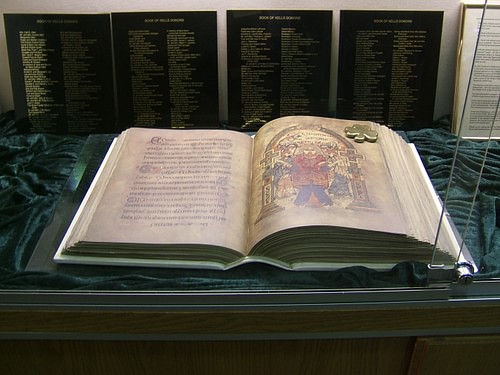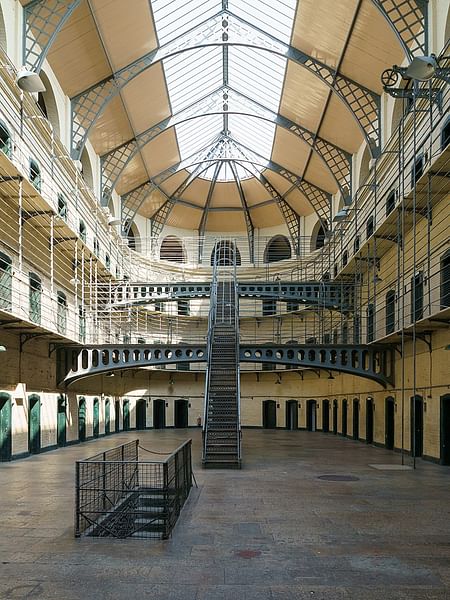Dublin has much to offer in cultural and historical experiences. It is a vibrant and colorful city, with a history dating back many centuries. Dublin has it all - from castles and a Viking harbor to ancient pubs, medieval libraries, and more. There is always something new to explore, so be sure to plan your visit well.
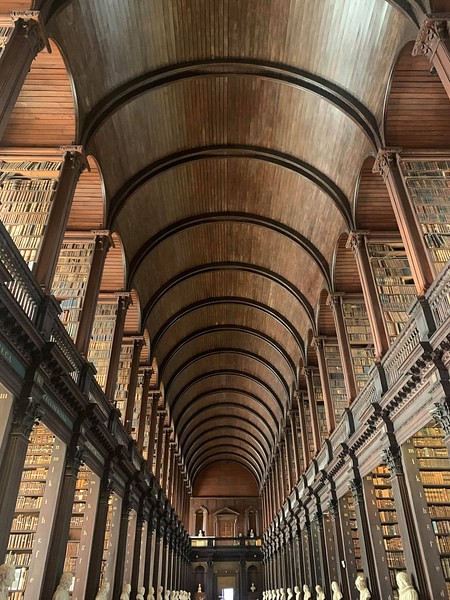
Viking Dublin
Dublin was founded as a port city by the Vikings after the seafaring Scandinavians first settled there c. 814. The Vikings named their new town Dyfflin after the small settlement and medieval monastery next to a pool in the River Poddle called Dubhlinn, meaning 'dark pool.' The area was a minor settlement before the Vikings arrived, and it was of little importance. However, the Vikings found the location at the estuary of the River Liffey to be perfect for establishing their new stronghold on the island. The city soon became important as settlers, including native Irish men and women, were drawn to the new power center on the island for work and trade.
The city the Vikings first settled is still very much the center of Dublin City. Today’s castle would have been located in the southeast end of the fortified town, which stretched north to the river. During the Viking period, it is believed that a wooden fort was located where the castle now stands. The town stretched north to the River Liffey, where the area now known as Wood Quay is, and the famous Temple Bar area would have been marshland, not yet drained. At Wood Quay, two sculptures of Viking ships stand today to remember the Viking heritage of the city.
For those interested in Viking history, it is recommended to visit The Steine or Long Stone. The stone is located north of Trinity College at the end of Pearse Street and Townsend Street and is a replica of a Viking long stone. The use of the original standing stone is not clear, but it is believed to have been raised by the Viking settlers sometime during the 10th or 11th centuries. It stood until the first half of the 18th century, while the memorial stone which can be visited was erected in 1986. Two faces adorn the stone: King Ivar the Boneless (d. 873), Viking ruler of the city during the 9th century, and the face of a nun from the monastery connected to St. Mary de Hogges.
Viking heritage can be explored on the northern side of Dublin. After the Vikings were defeated at the Battle of Clontarf in 1014, they moved to the other side of the River Liffey. This area still bears the name Oxmantown meaning 'Oestmen town' after the Vikings. It is interesting to go for a walk in this neighborhood, discovering the street names of clear Norse origin, including Olaf Road and Harold Road. It is believed that after the battle, some Vikings escaped and settled on the Howth Peninsula, which is a stunning area to explore for those eager to experience cliff walking and stunning Irish nature not far from Dublin's city center.
Also, visit Dublinia - a historical recreation museum with great exhibitions to learn about life in Dublin during the Viking Age and medieval period. This museum is worth a visit for anyone wanting to learn more about Dublin’s establishment. It is located in parts of the historic Christ Church Cathedral in what would have been a central location in the Viking town.
St. Patrick’s Cathedral
Ireland has a long and rich religious history, with much of the island converting to Christianity around the 5th and 6th centuries, thanks to the highly revered Saint Patrick (5th century), a Romano-British Christian missionary and patron saint of Ireland. A great place to learn about St. Patrick and Dublin’s religious history is St. Patrick’s Cathedral, which is the national cathedral of the Church of Ireland.
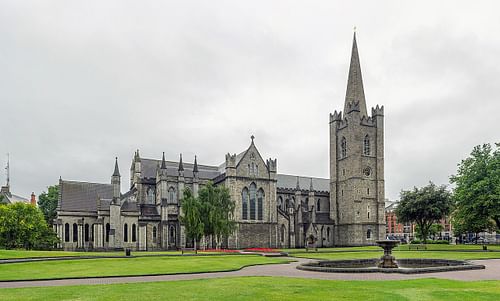
Just by the entrance to the church, there is a stone marking in the park where it is believed a well was once situated. The well is thought to have been used by St. Patrick to baptize the few inhabitants of the area during the 5th century. Several early Christian tombstones (now on display inside the church) have been discovered close by, suggesting the site’s religious importance before Dublin was established as a bustling trade port by the Vikings in Ireland. The medieval church was established in 1191, and the building you can visit today originates from c. 1220.
The cathedral is a magnificent Gothic structure with many stories to tell. When visiting this important religious landmark, there is also much to be learned about Irish history and the events 'experienced' by the ancient building. For example, in the left transept, an old door can be seen, which played an essential part in the reconciliation of a violent family feud. The door is known as The Door of Reconciliation, and through a hole in the door, the earls of Kildare and Ormond shook hands in 1492. Gerald Fitzgerald (1478-1513), the head of the Fitzgeralds of Kildare, ordered that the hole should be cut and risked his arm, offering it through the hole to show his opponents he was willing to negotiate for peace.
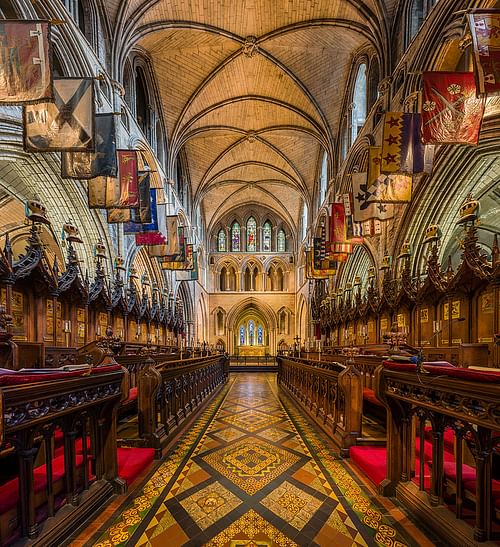
Those keen to learn and experience more of Dublin’s religious heritage should visit Christ Church Cathedral. The cathedral is believed to have been founded by Dúnán (d. 1074), the first bishop of Dublin and the Norse king Sitric Silkenbeard (r. c. 989/995-1036) as a Viking church during the 11th century, and is just a few minutes walk from St. Patrick’s Cathedral. The stone church, parts of which are still standing today, was built after the Norman invasion of Ireland (12th century). It is fascinating to visit the crypt under the church, one of the largest medieval crypts in Britain and Ireland.
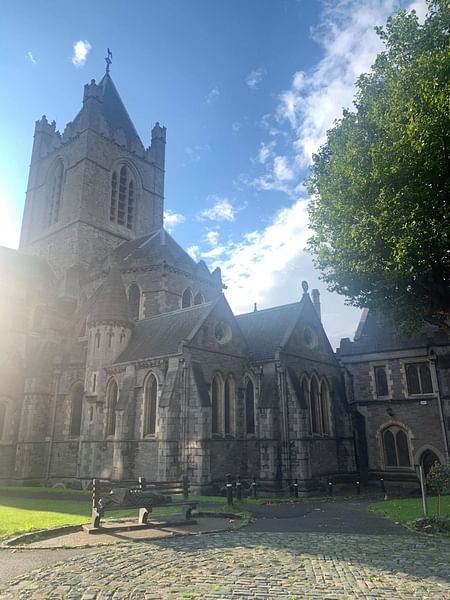
Dublin Castle
A must-visit monument in the city is Dublin Castle. This castle was the stronghold of the British rule and government administration in Ireland for centuries, and today it is a museum and Irish government complex. The Vikings first built their fort here when establishing the city, but the stone castle was constructed by the Norman invaders on the order of King John of England (r. 1199-1216) in 1204.
Little of the castle from this period still stands, as most of the castle consists of sections and extensions from later periods, mainly the 18th century, when much had to be rebuilt after a fire. The oldest part of Dublin Castle is The Record Tower, the only surviving tower from the medieval castle, dating from around 1230.
It is necessary to buy tickets to enter the castle, which provides entry to many of the most exciting rooms. Most famous are St. Patrick’s Hall, previously used as a ballroom and now the location for presidential inaugurations, the Throne Room, and the beautifully decorated State Drawing Room. The courtyard has also witnessed significant events. Even though the castle is associated with English rule, it was also an important site for Irish independence. On 16 January 1922, the Viceroy of Ireland handed the castle over to the freedom fighter and politician Michael Collins (1890-1922).
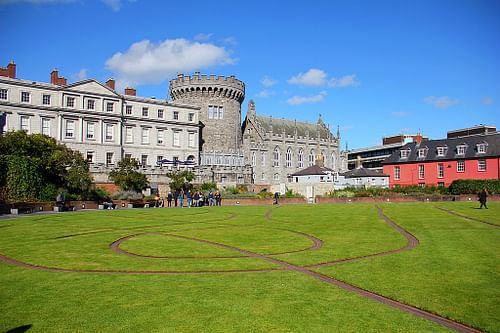
It is also recommended to visit The Dubhlinn Gardens, constructed over where the 'dark pool' was originally was located. Today, the circular park overlaying the pool and the river, which now runs underground before entering the River Liffey, consists of a lawn with patterns of six interlocking brick paths. The design is inspired by ancient Celtic art and design.
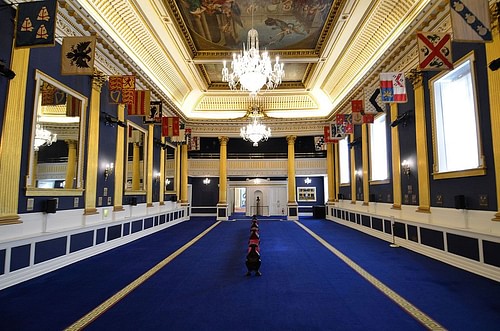
Trinity College
Trinity College is one of the most famous monuments in Dublin, with its beautiful campus in the middle of the city center. This university is very accessible to tourists who wish to explore the grounds and the famous Long Room of the old library. Trinity is the only ancient university located in Ireland and was established in 1592 by Queen Elizabeth I of England (r. 1558-1603) as the sole college of the University of Dublin. Today, the campus is bustling with students and visitors eager to learn more about the college’s rich history.
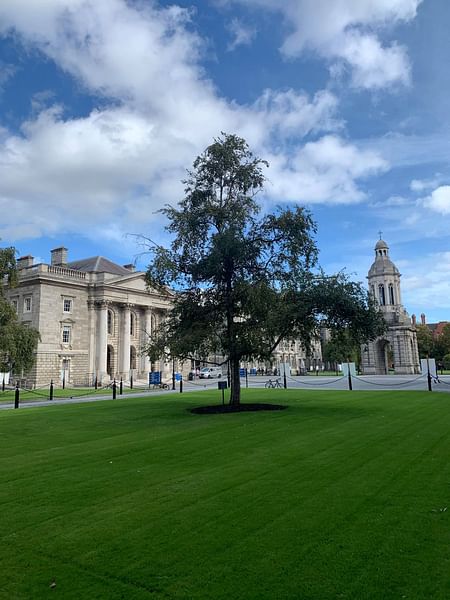
The iconic Campanile in the middle of the square becomes visible as you walk through the main entrance. There is a unique atmosphere on the Trinity campus, making almost anyone consider whether it might be time to go back to university and study for another degree. Most parts of the university are reserved for the students and are off-limits to the tourist, but the exhibition of The Book of Kells and the Long Room is amongst Dublin's most-visited tourist attractions. To enter it is necessary to book tickets, which should be done a good time in advance as this is one of the most popular attractions in the city.
First, visitors will walk through a museum exhibition explaining the history and important cultural legacy of the Book of Kells before the book itself is on display in a separate room. The Book of Kells contains the four gospels in Latin, written on vellum c. 800. The pages of this illuminated manuscript are beautifully decorated, the illustrations being what truly makes the preserved scripture so unique. The book's origin is not known, but most scholars believe that its production started on the Isle of Iona off the coast of Scotland. The monks had to escape the monastery at Iona due to Viking raids and sought refuge at the monastery in Kells in County Meath, Ireland. Whether the book was created at Iona, Kells, or partly at both sites is not known. Still, it is believed that three monks participated in the production of the incredible artistic visuals.
After the Book of Kells, the next part of the tour takes the visitor to the Long Room. The much-photographed Long Room, dating from the early 18th century, contains Trinity Library’s oldest books. For those interested in reading books and not just admiring them from afar, learning more about Dublin’s literary heritage is also recommended. Dublin is a UNESCO city of literature and is famous for authors such as James Joyce (1882-1941), Oscar Wilde (1854-1900), and Samuel Beckett (1906-1989).

Kilmainham Gaol
Kilmainham Gaol is one of the most important historic sites from the Irish struggle for independence. The prison was established in 1796 and was a functioning prison until 1924 when it was closed by the new Irish state as it had been a site and symbol of suppression and abuse for centuries. After decades of being closed and due to potential destruction, the Kilmainham Gaol was saved as a symbol and memorial for the many unfairly treated prisoners and opened to the public as a museum in 1966. Now one of Dublin’s most visited heritage sites, it is recommended to book your ticket in advance to make sure you can visit.
The most celebrated prisoners were the political leaders and freedom fighters of the Easter Rising, which took place over Easter 1916 and is considered a pivotal event in the fight for Irish independence, which was achieved in 1921. Several prisoners were executed in the Stonebreakers' Yard, while some, including the future taoiseach or president of Ireland Éamon de Valera (1882-1975), luckily survived. It is a truly emotional experience to see the cells that held many of the Irish heroes and imagine what their imprisonment must have been like.

